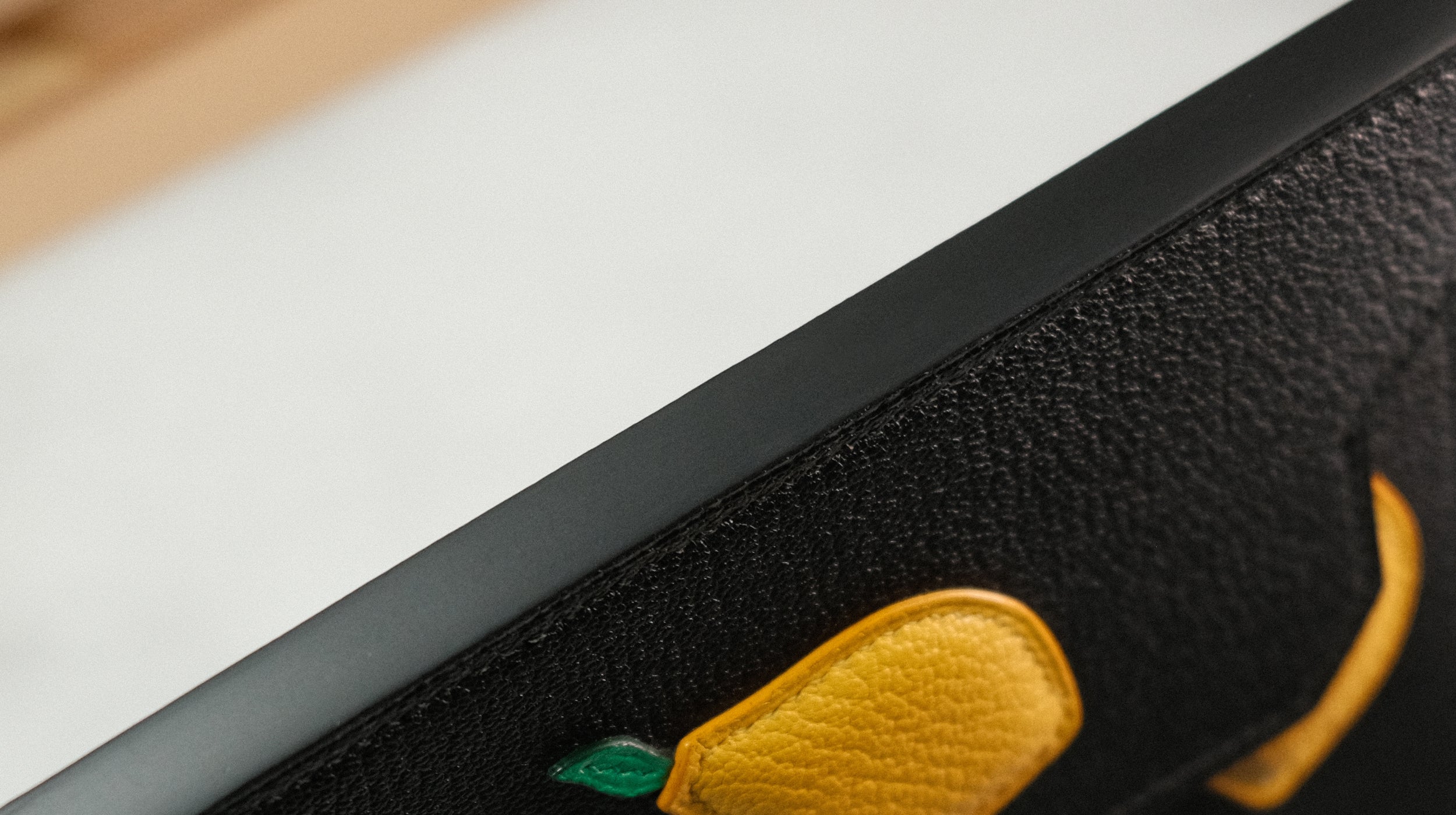The Art of the Edge
One of the quiet signatures of supreme leather goods lies in the edge. To the untrained eye it may seem simple, but to the craftsman it is a world of discipline, patience, and mastery. Edges are not merely finished; they are sculpted through a succession of time-honoured techniques that demand both precision and devotion.
The process begins with preparation. Layers are thinned where required, aligned with care, and joined with just the right measure of adhesive. They are pressed and tightened, again and again, to create a seamless foundation. The surface is then refined through sanding, from coarse to fine, guided always by the craftsman’s eye.
Colour is applied in delicate layers, each coat measured, each one followed by further sanding to ensure absolute harmony. The fileteuse, a heated iron, is brought to the edge, its temperature adjusted with exacting control, sealing the leather with both strength and elegance. Finally, a blend of waxes is polished into the surface, bringing depth, lustre, and protection.
This ritual is time consuming, exacting, and unforgiving. It is also what sets the finest creations apart. For in the edge lies a testament: that no detail is too small to be perfected, and no time too great to be given in pursuit of beauty.

Extra thick edge made up of 10-layers of leathers. 14mm wide.
Sanding & Sculpting
The process begins with the shaping of the edge, worked through a progression of grits from coarse to fine. Each pass is deliberate, drawn in one direction toward the centre to ensure precision and balance. This careful rhythm rounds and refines the profile, removing irregularities and setting the foundation for what will become a sculpted, seamless edge. Between every stage of painting, the edge is lightly sanded once more, maintaining smoothness and integrity throughout.
Fileteuse
Once the surface is prepared, the edge is sealed using the fileteuse, a heated iron spatula guided with control and sensitivity. The first coat of paint is pressed beneath the heat to tighten and seal the fibres, creating strength and cohesion. Between subsequent coats, the fileteuse is used again to smooth and perfect, always on a dry surface, ensuring the finish becomes increasingly refined. The result is a burnished surface of quiet brilliance, smooth to the touch and enduring in structure.
Painting the Edge
Edge paint is applied in multiple stages, each layer serving a precise purpose. The first coat penetrates deeply, sealing the leather and creating a firm foundation for those that follow. Subsequent layers are thicker, each one sanded and heat-sealed before the next is applied. The rhythm is unhurried; time must pass between coats so that the material can breathe and harden. Through this ritual, the edge gradually evolves, rich, sculpted, and luminous.
Waxing & Polishing
When the final coat has reached perfection, a blend of natural waxes, traditionally eighty percent beeswax and twenty percent paraffin, is applied in measured strokes. The edge is then hand-polished with heavy cotton canvas, releasing a gentle lustre and a protective seal. This final gesture adds depth and resilience, waterproofing the surface and revealing the warmth of the hand that shaped it.
The Final Edge
The completed edge is a quiet triumph of craftsmanship, smooth, dense, and luxuriously tactile, with a subtle bounce and a finish that recalls polished wood. It is the culmination of countless gestures, each one small, precise, and deliberate. This is not a process of production, but of devotion. Such edges are rare because they require time, patience, and mastery, the hallmarks of true luxury.

